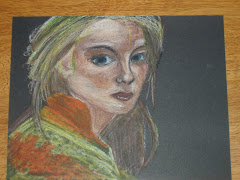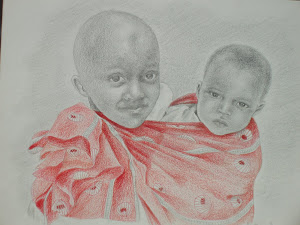Well, I'm going to attempt to blog about our experience at the L'Abri conference in Minnesota this past weekend but I know I can't fully express how much I was filled and inspired through it. I didn't really know what to expect from this conference before we left. All I knew was that we were going to fly out there, stay in this really nice hotel, and try not to freeze to death in negative degrees weather. :) Turned out we didn't even have to go outside - every place we had to go was connected by skyways - and the conference turned out to be a lot more than I expected. I filled a notebook with notes, but I guess that would be a little too much to put in a blog :) so these were some of my favorite workshops.
-
Of course, my absolute favorites were about art and the artist. There were two workshops on this subject taught by John Hodges, a conductor in Memphis, TN and I can honestly say they have changed how I look at what I do as an artist. The first was titled, "Creation, Creativity, and the Work of the Artist". It started out with the first Creation and explored in depth how we are created to be like our Creator in our artistic tendencies. He created for the love of it and was "overflowing with creativity". Likewise, when we create art only to make money or only for selfish gain, it is looked down upon. In a sense, God's art and our own art, since we were created in His image, should be the work of an amateur in that we create out of the sheer joy of creating. He also talked about the importance of beauty in art and that the purpose of art is for the contemplation of beauty. In our culture today, beauty is compromised for "truth" and when a painting is beautiful it is looked down upon as something false or fantasy. But in reality, beauty and truth are one and the same. God created beauty in this world to be a flashing, momentary glimpse of His overwhelming glory and when we see something deeply beautiful, we ache in our hearts and are affected by it. It shows us that we are missing something and gives us a longing to be completely filled with the fullness of God. C.S. Lewis described it like this then said, "that pain I would rather have more than anything in the world". The purpose of art is provide that glimpse into the glory of God. Not to use it as a tool, but rather that the creation of art itself provides that glimpse.
-
The next art workshop, a sort of sequel to the first, was titled "The Power of Art to Open Our Eyes". The most vivid example of this was an explanation by a tour guide of a cathedral window. While John Hodges was in France, he went to the Chartres Cathedral, which is, like many cathedrals, shaped like a cross with the top pointing to the east. On the west side, the end of the cross, three doors form the opening with a structure of Jesus on a throne of judgement overhead so that when you enter the church, you are entering at the foot of the cross under the judgement seat of Christ. But another example of the power of art in that same Cathedral is a window with the story of the Good Samaritan painted in progression. The story starts at the bottom of the window showing the man travelling from Jerusalem to Jericho, being robbed, the priest and Levite passing by, the Samaritan stopping to bind his wounds then bringing him to the inn and promising to finish paying for his needs when he returns. But, oddly enough, the story stops in the middle of the window and seems to be finished. Where it leaves off, the story of Adam and Eve begins, showing the fall into sin and then at the very top is a picture of Christ. Well, you'd think that the artist just ran out of room and so decided to tell another story on the same window but there is a better explanation. Instead of thinking about the Samaritan story in light of the question, "who is my neighbor?" think of the entire context of that story in Luke where the first question is instead, "what must I do to be saved?" Jesus answered both questions when he told this story. The man travelled from Jerusalem, a city on high ground, to Jericho, a city very low and so travelled downhill. The man is every man travelling downhill in our fallen world where we fell among robbers and were beaten. We lay there and a priest, representing the sacrifice, could not save us. Neither could the Levite, representing the Law order, save us. Only a man despised by others would stop and bind our wounds and take us to an inn, the church, to recover. All this could just be a far stretch, but when the Samaritan left he said he would be coming again to pay off whatever else was needed. John Hodges and many others in the room had tears in their eyes telling and hearing this story. It was truly an example of how powerful art can be to teach us and to affect us.
-
A few other favorites were titled "Living As An Image Bearer", and "Biblical Worlview In A World Adrift" both by Jeff Dryden and also a session by John Hodges explaining and translating Brahms' "A German Requiem".
-
Again, this doesn't relate half of the inspiration I was filled with. So much of what was said either brought tears to my eyes or got me so excited I felt I would burst. All the sessions and workshops were recorded and I ordered quite a few to listen to again. If anyone is interested you can get them here.
http://www.soundword.com/0rolco.html the General Sessions were a little longer than the workshops.











